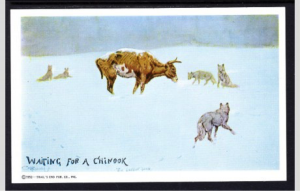
Tie Hackers in the North Fork of the Sun
by Yve Bardwell
If you come out on a trip into the North Fork of the Sun, Teton or Dearborn River Drainages you might notice some old, high stumps and wonder what the story is. They pop up into the air 3 feet sometimes 5 and look soft and muted amongst the standing timber. I was told once they were the result of giant beavers.
But the truth is retold in a great historical piece by John Vollersten about the tie hackers along the Front, featured in the January 2018 issue of the Montana Magazine.
In 1887 the St.Paul, Minneapolis & Manitoba railroad, owned by James Hill, pushed from the northeast corner of the territory to Great Falls in six months. Ten thousand men and 6,600 horses built that bed by hand and tie-cutting operations along the Rocky Mountain Front provided nearly half a million ties that were cut, hewn and floated from the mountains. Many of those ties came from deep within the Bob Marshall Wilderness.
In the winter of 1886 (this may ring a bell for many of you as that famous brutal winter that Charlie Russell captured with his sketch of the humped up calf “waiting for a Chinook or last of 5,000) a contract was let to provide the Manitoba line with 600,000 ties to build the line from Great Falls into Canada.

The work was divided among the drainages, but to me the work done up the Sun River is the most fascinating. In the heart of the Bob Marshall a camp of seventy some men was spiked at the mouth of Headquarters Creek and supplied through the winter with pack stock and burro’s. The men cut on average of 20 trees a day and drug their quarry to the rivers edge to await spring after the trees had been hewn flat with a broad axe on two sides and cut to 8 foot lengths. Teams of oxen would drag the ties to the river and “bank” them.

The real winter came in February and it is reported that it snowed for 6 weeks with temperatures routinely sitting at 30 – 40 degrees below zero. Some of the hovels these men lived in were no more then that. There are remnants of shacks near Gates Park where men would have crawled through the door on their bellies and not been able to do more then sit-up once they were inside.
Due to the rugged winter the spring run-off was high and because of some calamities that happened with the ties on the Teton, hackers in the Sun waited until July to unbank their ties and float them down the river. After two months and 121 river miles the ties reached the mouth of the Sun River where they were caught in booms. The banking of ties was reported to have taken place at a rate of ten thousand per day. They were then immediately loaded onto freight trains and sent down the line.

It was an amazing feat and an even more astounding piece of wilderness history. It is hard to believe when spotting one of these old specters the men and the story behind it. If you’d like to read more you can find a more detailed version of this history in Montana: The Magazine of Western History the January issue. The magazine is available at the Montana Historical Society as well as most newsstands around the state.







